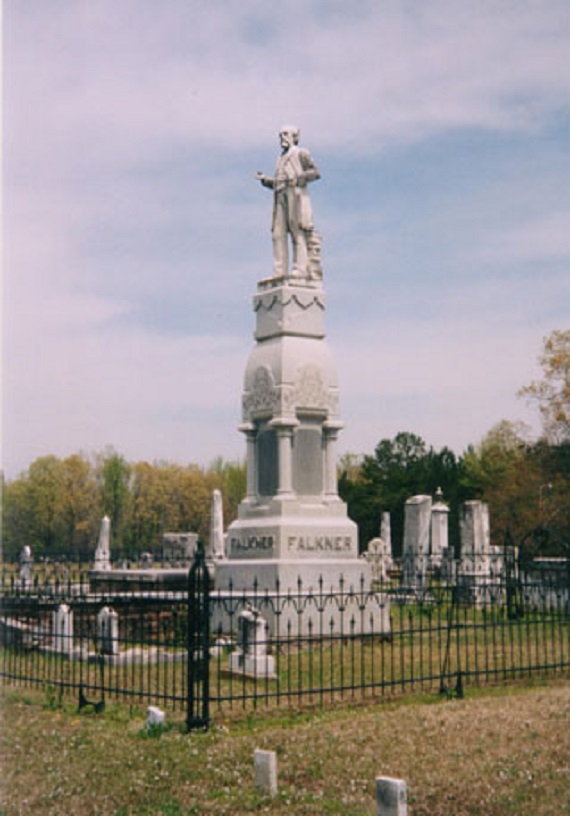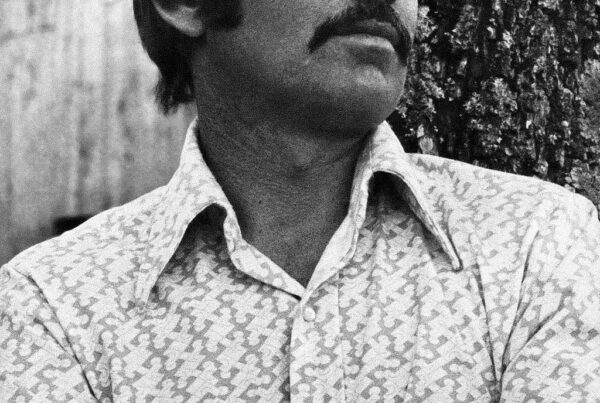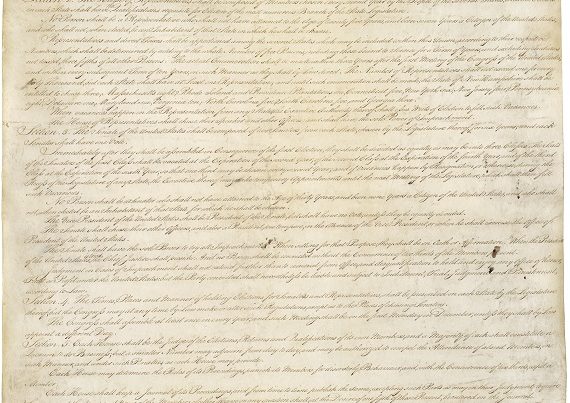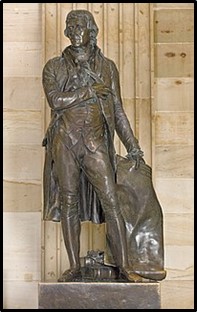The date was Tuesday, November 5th . . . the year was 1889 . . . federal and local elections were being held in twenty states throughout America. In addition to the elections in Virginia that day, the newly launched steamer “New York” was setting out on her trial run from Norfolk. Further south, after winning a seat in the Mississippi Legislature, Colonel William Clark Falkner was taking a casual evening stroll along Main Street in his hometown of Ripley. As he passed the law office of his former business associate, Richard J. “Dick” Thurmond, just opposite the Tippah County Courthouse, a shot was fired by Thurmond and Falkner collapsed in the street mortally wounded. By an odd quirk of fate, on May 8th, just forty years previously, a man with whom Falkner had served in the Mexican War, Robert Hindman, had also attempted to shoot Falkner at almost the exact same spot in Ripley. However, when Hindman’s pistol misfired, the intended victim drew out a large Bowie knife and stabbed his assailant to death. While there are various theories concerning the deadly altercation between the two former soldiers, the one most accepted is that both had been in love with the same girl, Holland Pearce, and when she married Falkner in 1848, Hindman sought revenge a few months later.
Eight years after Falkner’s tragic death, his great-grandson, William Cuthbert Falkner, would be born just twenty miles to the south in New Albany, Mississippi. The second William C. Falkner would later restore the original “u” to the family name and go on to become one of the South’s, and America’s, greatest authors . . . winner of the Nobel Prize for Literature in 1949, two Pulitzer Prizes for Fiction and two National Book Awards. It has been reported that William Faulkner once said that he always wanted . . . “to be a writer like my great-granddaddy,” but even if the quote might be apocryphal, Faulkner, in one of his earliest novels in 1927, “Flags in the Dust,” created a fictional portrait of his great-grandfather in the person of Colonel John Sartoris, a cavalry officer from the mythical Mississippi county of Yoknapatawpha who had served in the War Between the States. The initial work was severely edited, with over 40,000 words being deleted, and finally published two years later under the title “Sartoris.” In 1973, however, the original wording was restored, and the novel was republished under its initial title. The Colonel Sartoris character was later used by Faulkner in a series of stories that appeared in the Saturday Evening Post and Scribner’s Magazine from 1934 to 1936, and then published as a novel in 1938 with the title of “The Unvanquished.”
The real-life “Colonel Sartoris,” however, was, if anything, even more of a character than the fictional one depicted in the writings of his illustrious great-grandson. William Clark Falkner was born on July 6, 1825 (some say a year later), in Knox County, Tennessee, where his Welsh ancestors had come as early pioneers with the original family name of Faulkner. When he was still a young boy, his father died shortly after the family had moved to St. Genevieve, Missouri, and William somehow had to support his widowed mother and his younger brothers and sisters. About 1840, the family moved to Pontotoc, Mississippi, to stay with an uncle, while the teen-age William went on to the rapidly developing town of Ripley to seek employment. He began clerking in local establishments, and finally started studying law under the tutelage of a local attorney and former schoolteacher, an Irish immigrant named James Kernan.
When the United States went to war with Mexico in 1846, young Falkner joined a local volunteer group, the Tippah Guards, a unit that later became part of the Second Mississippi Infantry Regiment under the command of Colonel Jefferson Davis. Even though Falkner saw no major combat during the conflict, his application for a lieutenant’s commission was accepted, as well as a pension request for a somewhat questionable wound he received while in Aguascalientes that may or may not have been battle related. After returning home to Mississippi and marrying Miss Pearce, he soon became a participant in two deadly encounters . . . the one with his fellow veteran, Robert Hindman, and the other with an enraged friend of Hindman’s, Erasmus Morris, who Falkner shot in a subsequent duel. Falkner was brought to trial for the two killings, but was acquitted on both charges on the grounds of self defense. Falkner had also continued to study law after his return to Ripley, this time with his uncle, John Wesley Thompson Falkner, who became the namesake of the new couple’s only child. When his “reading” of the law was completed and the bar examination passed, Falkner established his own practice which became most lucrative and gained him much fame in the area. In time he was able to purchase a 2,000-acre plantation near Ripley and a few slaves to run it, as well as venturing into local politics as a supporter of first the Whig and then the American, or Know-Nothing, Parties.
Shortly after beginning his law practice, Falkner’s wife passed away due to complications with their second child, and in 1852 he remarried a girl he had met while staying in Pontotoc, Elizabeth Vance. His life as a successful attorney and part-time planter ended abruptly in 1851, however, with the secession of Mississippi and the beginning of the War Between the States. Early that year Falkner organized a volunteer unit called the Magnolia Guards which he later merged with other local units to form the Second Mississippi Regiment. With Falkner as its colonel, the unit was ordered to Virginia to join the Army of the Shenandoah under the command of General Joseph E. Johnston for the War’s first major battle at Manassas. Both the regiment and it commanding officer won high praise during the battle, not only from General Johnston but also from Generals Beauregard, Whiting and Bee, and when Brigadier General Bee fell mortally wounded next to “Stonewall” Jackson’s brigade on Henry House Hill, Falkner was given temporary command of Bee’s brigade. After the Confederate victory at Manassas, Falkner and his regiment were furloughed back to Mississippi and prior to returning to duty, the regiment held new elections for officers . . . an action that dashed Falkner’s dreams of becoming a Confederate general.
In spite of the high praise he had received at Manassas, Falkner was voted out as the regiment’s colonel. When General Johnston heard of the change in command in April of 1862, he wrote the following letter to Secretary of War Randolph:
“I take the liberty of offering my testimony in behalf of Col. Falkner, late of the 2nd Mississippi regiment. This gentleman has served with me in command of that admirable regiment for the last eleven months. Its discipline and instruction during all that time prove his zeal and capacity – as his courage was proved on the field of Manassas. I regret very much to lose him. If he can be replaced in the army in a position adequate to his merit, be assured that it will be fortunate for the service as well as the efficiency of the troops he may command.”
The general’s appeal failed to win Falkner a new command in the Confederate Army, but later that year he was allowed to organize a unit of the recently authorized partisan rangers known as the Seventh Mississippi Cavalry Regiment. The unit cooperated with General Nathan Bedford Forrest’s cavalry in the battles of Harrisburg and Brice’s Crossroads in Mississippi and assisted General James Chalmer’s cavalry in the the Battle of Collierville in Tennessee, as well as the Mississippi battles of First Corinth and Rienzi. In the latter, they encountered the Union garrison that had been established in Falkner’s hometown of Ripley. In June 1863, Falkner’s rangers were on picket duty outside the town of Hernando near the Mississippi-Tennessee border where they were guarding the railroad line running north to Memphis when they were attacked by a large Union force and completely routed. Two months after the defeat, Falkner resigned his commission and joined with his future assailant, “Dick” Thurmond, in running needed supplies through the Union lines near Memphis until the end of the War.
Following the conclusion of the War, Falkner returned to Ripley and renewed his law practice in partnership with Judge J. W. Thompson. Again he was successful, and soon emerged as one of Tippah County’s leading citizens. He also became interested in philanthropic pursuits, and in 1866 was largely responsible for establishing the area’s only school for higher female education, Stonewall College, an institution that remained for two decades before merging with the Ripley Male and Female Academy. Eventually he turned his legal practice over to his oldest son and again teamed up with “Dick” Thurmond to create the Ship Island, Ripley and Kentucky Railroad Company, the nation’s first narrow-gauge rail line which initially ran twenty-five miles from Ripely to Middletown, Tennessee. Funding for the line came partially from local subscribers, but the company finally obtained a state subsidy of $4,000 a mile after Falkner managed to lobby for a change in the law to include narrow-gauge lines. The small line continued to prosper and grow over the years, and through a number of mergers it finally evolved into the Gulf, Mobile and Ohio Railroad that ran all the way from Ohio to the Gulf of Mexico.
Falkner always had a great interest in literature as well, starting with his writing of a melodramatic, privately-printed pamphlet entitled “The Life and Confession of A. J. MacCannon, Murderer of the Adcock Family.” The piece was penned by the young law student in 1845 to help gain an acquittal for a man charged with the brutal ax murder of an entire family. He then began his published works in 1851 with an epic poem and a romantic novel based on the Mexican War, “The Siege of Monterey” and “The Spanish Heroine.” After returning home to Ripley following the War Between the States, he wrote a rather successful play in 1867, “The Lost Diamond,” but his real literary efforts did not begin until 1881 when he wrote his most enduring work, the novel “The White Rose of Memphis,” that is still being reprinted. The following year, Falkner made a tour of Europe which led him to write a well-received travel book, “Rapid Ramblings in Europe,” and later that same year a novel of his about New York City, “The Little Brick Church,” was also published. This last work of Falkner’s was revised in 1895 and republished under the title “Lady Olivia.”
The final phase in Falkner’s highly eclectic career was his renewed interest in politics. After his return to Ripley in 1865, he turned completely away from his earlier adherence to the policies of the Whig and Know-Nothing Parties and fully embraced those of the Democrats. While most active in Democratic Party affairs in both Ripley and throughout Tippah County for over two decades, it was not until 1889 that he finally ran for public office and was elected as a member of the Mississippi State Legislature. His political career, most sadly, was terminated immediately after the election with the fatal shot fired by his former friend and long-standing business partner, “Dick” Thurmond.
While the exact rationale for Thurmond’s violent action has never been fully revealed, it was widely known that the two men had been at odds for several years. Once both men had even been fined for engaging in a public exchange of highly colorful invectives on the town square. All of this led to Falkner’s paranoid but prophetic conviction that Thurmond would someday do him bodily harm, as well as the execution of a detailed will just ten days prior to his death. In the shooting, the bullet from Thurmond’s pistol had lodged in Falkner’s neck, and although it did not kill him instantly there was no one available to perform the needed operation to remove the projectile. Within twenty-four hours Falkner’s throat would become greatly swollen and choke him to death. Thurmond was arrested that same night and jailed in the courthouse a few steps from the shooting. He was subsequently tried on a charge of murder and while the defense’s claims that Falkner had been drunk and threatened Thurmond with a knife had both been disproved, the defendant was ultimately acquitted. Thurmond soon left Ripley and Mississippi for North Carolina where he died with little or no notoriety in Charlotte in 1907 at age 78. Falkner’s passing, on the other hand, was attended by the largest public funeral ever held in Tippah County, with an elaborate Masonic service at his grave and the erection of a massive granite statue of the “Old Colonel” above it, backed by a stack of stone books. It is, in fact, virtually the same type of monument depicted many years later by his great-grandson in memory of the fictional Colonel John Sartoris.







